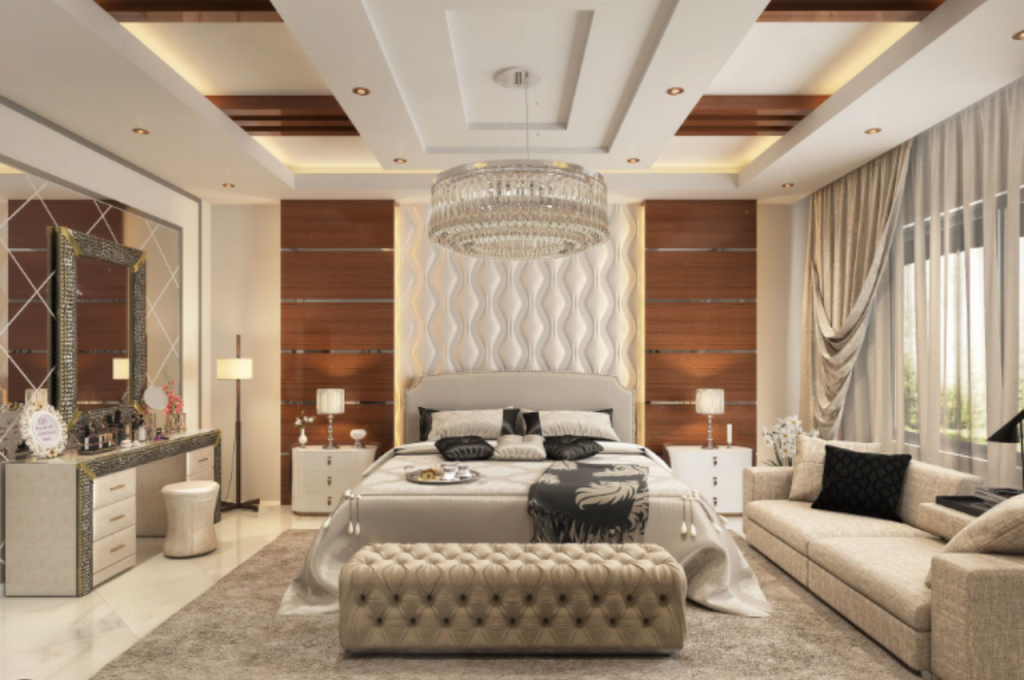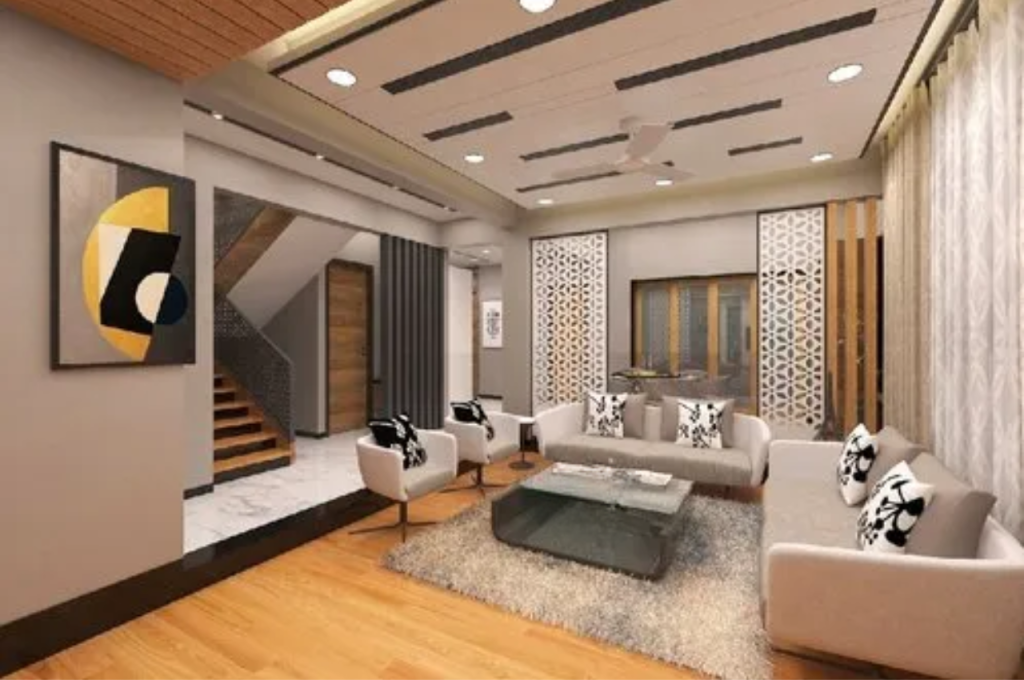When designing a living room vs. A bedroom, consider function and style to create distinct, cozy spaces. The living room serves as a communal area for family and guests, emphasizing comfort and entertainment.
In contrast, the bedroom is a more private sanctuary for rest, focusing on creating a peaceful and restful atmosphere. Each space has unique design elements and furniture arrangements tailored to its specific purpose and desired ambiance. By understanding the distinct roles of the living room and bedroom, you can create personalized spaces that cater to different needs within your home.
As you plan the layout and decor of these rooms, keep in mind their functions and the overall harmony of your home design.
Aesthetics
When contemplating the visual appeal of your living environment, both the living room and bedroom serve as canvases for expressing your unique style and individuality. These spaces offer versatile opportunities to curate aesthetics that resonate with your personality and preferences. Whether you prefer a cozy and intimate atmosphere in the bedroom or a more sociable and inviting ambiance in the living room, your design choices can reflect your taste and lifestyle.

Color Schemes
Color schemes play a crucial role in setting the mood of a room. In the living room, vibrant hues can create a lively atmosphere, while the bedroom often benefits from calming and soothing tones.
Decor Styles
Each room allows for different decor styles to shine. Modern and minimalistic designs are popular in living rooms, while bedrooms often showcase cozy and intimate setups.
Functionality
Functionality is a crucial aspect to consider when comparing the living room and bedroom. Each space is designed to serve specific functions, and understanding these differences can help in optimizing the use of each area.
Activities Accommodated
- Living Room: The living room is primarily designed for hosting gatherings, relaxation, and entertainment. It accommodates activities such as watching television, socializing with guests, playing games, and unwinding after a long day.
- Bedroom: On the other hand, the bedroom is tailored for personal rest. It accommodates activities like sleeping, reading, dressing, and storing personal belongings.
Storage Solutions
- Living Room: In the living room, storage solutions often revolve around media equipment, such as TV consoles, shelves for books and decor items, and multifunctional furniture that doubles as storage.
- Bedroom: Bedrooms typically feature storage solutions like wardrobes, dressers, bedside tables, and under-bed storage to accommodate clothing, accessories, and personal belongings.
Comfort and Coziness
When it comes to creating a comfortable and cozy space, the living room and bedroom play crucial roles. These areas of our home are where we seek solace, relaxation, and rejuvenation after a long day. But how do the living room and bedroom compare in terms of comfort? Let’s explore two key factors: furniture comfort levels and temperature and lighting factors.
Furniture Comfort Levels
The furniture in a room can greatly influence its comfort level. In the living room, plush sofas and armchairs provide a welcoming and cozy atmosphere. These pieces of furniture are designed to support your body and provide optimal comfort during movie nights or gatherings with friends and family.
In contrast, the bedroom focuses on offering a more personalized and restful environment. The bed, being the centerpiece, should be comfortable enough to ensure a good night’s sleep. Mattresses and pillows that conform to your body’s contours help alleviate pressure points and ensure your body is properly supported for a blissful sleep.
Temperature and Lighting Factors
Creating the right ambiance with temperature and lighting is essential for comfort. In the living room, adjustable lighting options allow you to set the mood according to your preference. Soft, warm lighting can create a relaxing and cozy atmosphere, perfect for unwinding after a busy day.
On the other hand, the bedroom benefits from a gentle and calming lighting setup. Dimming the lights before sleep signals to your body that it’s time to wind down and promotes melatonin production, aiding a night of more restful sleep. Controlling the temperature in your bedroom is equally important. A comfortable temperature, neither too hot nor too cold, ensures you can cozy up and enjoy a tranquil sleep.
| Furniture Comfort Levels | Temperature and Lighting Factors | |
| Living Room | Plush sofas and armchairs | Adjustable lighting for mood-setting |
| Bedroom | Comfortable bed with supportive mattresses and pillows | Gentle and calming lighting for winding down |
Whether it’s the cozy sofas and armchairs in the living room or the comfortable bed and tranquil lighting in the bedroom, both spaces offer unique ways to unwind and relax. It ultimately comes down to personal preference and the specific needs of each individual. So, when creating your ideal retreat, consider the furniture comfort levels and temperature/lighting factors that will make you feel most at ease in your living space.
Personalization
When it comes to personalization, both the living room and bedroom offer numerous customization options to reflect your taste. Whether you prefer a cozy and inviting living space or a serene sanctuary, the ability to personalize your surroundings is essential in creating a space that truly feels like home. Let’s explore the customization options and how they can help you reflect your style in both the living room and bedroom.

Customization Options
Both the living room and bedroom provide an array of customization options, allowing you to transform the spaces according to your unique preferences. From furniture and decor choices to color schemes and layout, you have the freedom to make the space truly your own.
Reflecting Personal Taste
One of the key advantages of personalizing your living room and bedroom is the ability to reflect your taste. In the living room, you can showcase your individuality through the choice of furniture pieces, such as sofas, coffee tables, and shelves. Opt for bold and vibrant colors, and unique patterns, or mix different styles to create a visually appealing and eclectic space that truly represents your personality.
In the bedroom, personalization can be achieved through various elements, starting with the bed itself. Choose a style that sparks joy and tranquility, whether it’s a luxurious canopy bed, a minimalist platform bed, or a cozy upholstered headboard. The bedding, pillows, and curtains can also contribute to the overall aesthetic, allowing you to create a serene and inviting atmosphere that reflects your style and preferences.
Additionally, both rooms offer ample opportunities for personalizing the decor. In the living room, you can display art pieces, photographs, or sentimental items that hold a special meaning to you. Showcase your favorite books, add indoor plants for a touch of nature, or incorporate statement lighting fixtures to add personality to the space.
Privacy and Tranquility
When it comes to designing a home, the living room and bedroom have their unique purposes and characteristics. One important aspect to consider is the level of privacy and tranquility each space offers. Let’s delve into the importance of privacy and tranquility in both the living room and bedroom.
Soundproofing
Soundproofing plays a crucial role in maintaining privacy and tranquility within a living space. In the bedroom, having well-insulated walls, windows, and doors is essential for creating a peaceful and restful environment. On the other hand, while soundproofing is also important in the living room, it may serve a different purpose, such as minimizing noise from entertainment systems or conversation.
Level of Seclusion
The level of seclusion differs between the living room and bedroom. In the bedroom, a high level of seclusion is desired, providing a private sanctuary for relaxation and rejuvenation. Conversely, the living room often serves as a more social space, where some level of interaction with others is expected. Balancing seclusion with the need for social interaction is important in this area of the home.
Maintenance
The maintenance required in a living room differs from that in a bedroom. From furniture care to cleaning routines, each space has its unique requirements for upkeep and maintenance.
Maintenance plays a crucial role in determining the practicality of a room for everyday living. Let’s explore the aspects of maintenance when it comes to the Living Room versus the Bedroom.
Cleaning Effort Required
In the Living Room, regular dusting and vacuuming are essential to maintain cleanliness. Upholstered furniture and carpets may require spot cleaning as needed.
Durable Materials
Consider durable materials such as leather or microfiber for living room furniture, as they are easy to clean and resistant to wear. In the Bedroom, focus on low-maintenance bedding materials like cotton or microfiber that are machine washable. For flooring, choose materials like hardwood or laminate that are easy to clean and less prone to stains.
Cost Considerations
Considering the cost differences between setting up a living room versus a bedroom is crucial. Let’s break down the financial aspects of each space to help you make an informed decision.

Initial Setup Costs
- Furniture: couch, coffee table, TV stand.
- Decor: rugs, curtains, artwork.
- Furniture: bed, bedside tables, wardrobe.
- Bedding: sheets, pillows, duvet.
Long-term Investment
- Minimal wear and tear on furniture and decor.
- Potential for occasional updates or new accent pieces.
- Bed and mattress may require replacement every 7-10 years.
- Bedding and linens need regular washing and might get worn out.
Frequently Asked Questions On Living Room vs Bedroom
Certainly! Here are some questions about living room vs bedroom:
1. Is it better to have a TV in the living room or the bedroom?
Having a TV in the living room is ideal for social gatherings and family time, while a TV in the bedroom offers a more personalized entertainment space for relaxation and privacy.
2. How does the design of the living room differ from the bedroom?
The living room is often designed for social interaction and entertainment, with more open space and seating options, while the bedroom is more focused on personal comfort and relaxation, often featuring a bed as the central focus.
3. How does lighting differ between the living room and bedroom?
Living room lighting tends to be brighter and more versatile, accommodating various activities, while bedroom lighting is softer and more conducive to relaxation and creating a cozy atmosphere for sleeping.
Conclusion
Both the living room and bedroom play important roles in our daily lives. Both spaces offer unique functionalities and comfort. Whether it’s relaxation, entertainment, or sleep, each room has its significance. Ultimately, the choice between the two depends on individual preferences and lifestyle.
Understanding their purpose helps in optimizing these spaces for a harmonious home environment.

